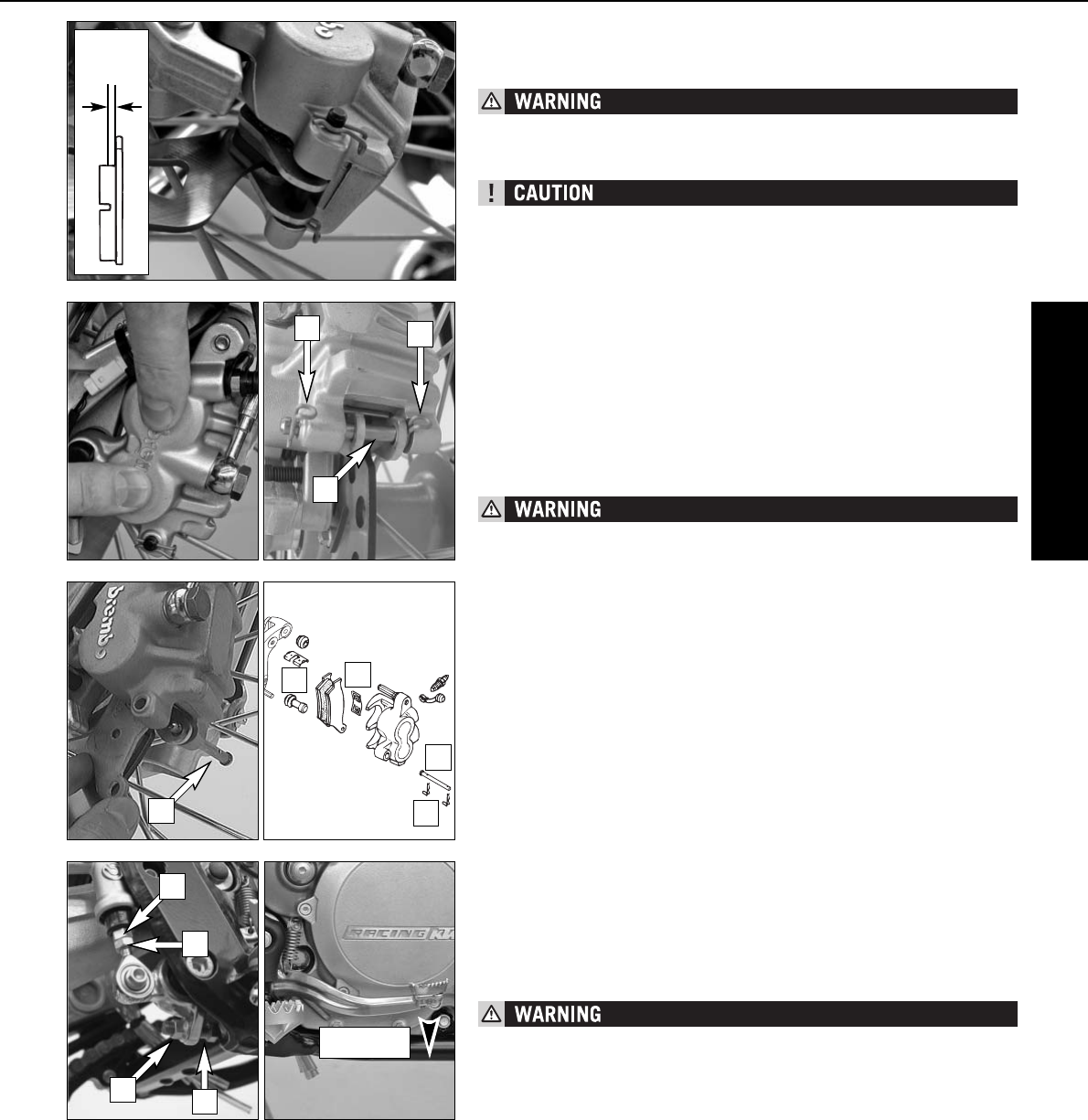
MAINTENANCE WORK ON CHASSIS AND ENGINE
»
ENGLISH
35
Checking the front brake pads
The brake pads can be inspected from below. The linings must be at least
1 mm (0.04 in) thick.
At their most worn point brake pad linings should not be thinner than 1 mm,
otherwise they could lead to brake failure. For your own safety don’t put off
having your brake pads changed.
If the brake pads are replaced too late so that the lining is partly or entirely
worn, the steel components of the brake pad will rub against the brake disc,
thereby imparing the braking effect and destroying the brake disc.
min.
1 mm
3-5mm
1
1
2
2
1
2
4
3
8
7
6
5
Replacing the front brake pads *
Press the brake caliper toward the brake disk, to put the brake piston in its
basic position. Remove clips [1] and pull out bolt [2]. Remove brake pads
from the brake caliper. Clean the brake caliper and the brake caliper support
with compressed air. Check the sleeves of the guide bolts for damage, and
grease guide bolts if necessary.
Mount the right brake pad and fix it with the bolt. Mount the left brake pad
and insert the bolt until it stops. Mount the clips.
When mounting the brake pads, be sure to check for correct fit of the
sliding metal-sheet [3] in the caliper support and of the leaf spring [4].
– It is very important to keep the brake disk free from oil and fatty matters.
Otherwise, the braking effect would be strongly reduced.
– After assembly, check if circlips have been fitted correctly.
– After working on the braking system, always actuate the hand brake lever
or foot brake lever, respectively to ensure that the brake pads will lie against
the brake disk and the pressure point is established.
Changing the basic position of the foot brake pedal *
To change the basic position of the foot brake lever, loosen the counternut
[5] and turn the stop screw [6] as needed. Be sure to adjust the free travel
of the foot brake lever. Measured on the outside, the foot brake lever should
have 3-5 mm free travel before the piston rod moves the piston in the foot
brake cylinder (you will feel the stronger resistance of the foot brake lever).
Loosen the counternut [7] and turn the pushrod [8] as needed.
If this free play is not present, then pressure can build up in the brake sys-
tem when driving, causing the rear wheel to brake.The braking system over-
heats and may even fail completely in extreme cases.


















